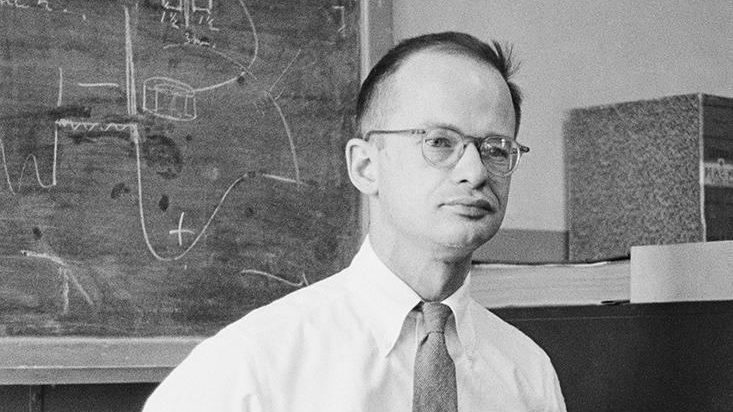This episode is from Hard Reset, a Freethink original series about rebuilding the world from scratch and reimagining everything from first principles.
Catch more Hard Reset episodes on their channel: https://www.freethink.com/shows/hard-reset
NARRATOR: This magnifying glass has a technical name, a sunlight refinery. To use it, find somewhere really sunny, plop down a bunch of mirrors, bounce the sunlight into a single spot and you can melt just about anything. Okay, so it is kind of death ray-ish. Why do this? Because manufacturing steel or cement requires a lot of heat and making something super hot has historically meant burning dinosaurs.
STEVE SCHELL: You look at the massive carbon footprint that is associated with these industrial applications and it can't be ignored.
NARRATOR: Twenty percent of global carbon emissions to be precise. And because this technology is so good, it might just change the entire energy industry. And prevent World War III in the process.
This is "Hard Reset," a series about rebuilding our world from scratch.
Just east of Six Flags and north of LA is a place called Lancaster, which is very flat, very hot and a perfect place to test a takeover of the world's energy supply. Yeah, that sounded more Bond villain-y than I thought it would. Anyway, these are called heliostats and the reason this solar refinery works so well is that under these mirrors and shot glasses are pretty simple motors that they can control remotely. And this allows the mirrors to change angles throughout the day, depending on where the sun is. How do they know where the sun is? Interns. No, AI, of course.
BILL GROSS: You need to take each of thousands of mirrors and point them very, very precisely, accurate to about 1/10 or 1/20 of a degree.
NARRATOR: That's Bill Gross, genius visionary and founder of over 150 companies. Also super nice guy.
GROSS: Thank you, I really appreciate it.
NARRATOR: At the top of the tower, high-resolution cameras monitor the position of the mirrors below.
SCHELL: You can actually see the two at the top are the easiest to pick out 'cause they're on booms above the receiver.
NARRATOR: So Heliogen gets all those mirrors to reflect sunlight into that big target at the top.
SCHELL: So what we've got just above us is the solar receiver. So you can see that's what we saw from ground level. That's where that concentrated sunlight is focused when the field is operating.
NARRATOR: The cameras know if the mirrors are bouncing into the sun because those cameras are assessing the quality of the sky's blue. Let's break that down with Steve, who has cool tattoos.
SCHELL: This is my robot battle armor and what I have here is a jungle on an alien planet with robots tending the garden.
NARRATOR: And is in charge of the technology stuff here.
SCHELL: What these cameras see is the reflection of the sky close to the sun. Close to the sun, the sky appears very bright from the scattered sunlight coming through it and the further away from the sun you look, the darker or less bright that patch of sky appears to be.
NARRATOR: So the cameras look at the color blue and the AI uses that information to assess the distance from the sun, deduce the orientation of the mirror and therefore, where the beam is going.
SCHELL: So every few seconds, we get a measurement of where that beam is going and we can command the heliostat to make small corrections to optimize its tracking. In this industry, that is a complete game changer 'cause now we don't rely on the hardware to be so precise, we have software to make it precise. So it really changes everything about how that plant operates and allows us to reach higher performance levels at a much lower cost.
NARRATOR: So software that controls accuracy, not hardware. And the more accurate those mirrors can be throughout the day, the fewer of them they actually need. More importantly, it allows Heliogen to do something that no other concentrated solar refinery has been able to do. Generate temperatures north of 1,000 degrees Celsius.
GROSS: People have done mirror concentration before but they've achieved 400 degrees, 500 degrees. We've achieved 1,500 degrees.
NARRATOR: That heat is important because solar energy needs to be used immediately or stored somehow. Batteries are expensive and problematic but you know what's cheap and safe? Just normal rocks.
WALTER WHITE JR: You have a rock collection?
HANK SCHRADER: It's a mineral collection.
GROSS: And we take that high temperature and we bring it down into a rock bed. We literally heat rocks to 1,000 degrees Centigrade.
SCHELL: The temperatures are so high, the metal actually can't take it. So we put the insulation on the inside to protect the steel from those high temperatures.
GROSS: If you heat rocks to 1,000 degrees Centigrade with the photons, they now stay hot even after the sun goes down. Those rocks are in an insulated tank, like a thermos. And they'll stay hot for a week.
NARRATOR: Those rocks act as batteries, storing energy that can be used to generate power 24 hours a day.
GROSS: It allows us to power things that need to run around the clock. And civilization does run around the clock.
NARRATOR: But wait a minute, haven't we heard this all before? How solar energy is gonna revolutionize the world? The difference here seems to be that everything at Heliogen is built around scale. This plant we went to is only a test facility, 400 heliostats. A proper sunlight refinery will be 40,000 heliostats.
SCHELL: So 100 times as much solar collector as what we have here.
NARRATOR: To build refineries all over the world, they're betting on small.
GROSS: Make all the mirrors small so they can be factory produced and make them easy to roll out because we don't need cranes or heavy equipment to deploy them. Our vision was to make this like farming, so we could cover lots of ground very inexpensively. Almost like a harvester or a tractor planting rows of seeds. That is critical because to power the Earth, we need to cover hundreds of square miles, which is actually not that much to power the whole planet.
NARRATOR: Really?
GROSS: But covering hundreds of square miles needs to be done cost effectively.
SCHELL: We essentially designed this to be highly automated, robotic tractors that can carve the trenches, place the heliostat foundations, pour the concrete and then the drives and the mirrors are set on afterward in a very efficient way.
NARRATOR: So the plan is that these refineries go in places that are flat with lots of sun like desserts, [bell dinging] deserts. Deserts. Then they take that concentrated sunlight, convert it to electricity, put that electricity through an electrolyzer and split a water molecule to get hydrogen.
GROSS: Green hydrogen can be put in pipelines and moved thousands of miles or put on ships and moved across oceans. The powerful thing about that is we can then make the energy where the sun is good and move it to where the sun isn't. And that's what we need to do to power civilization. Beating the price of fossil fuels is the only thing that matters 'cause otherwise people will keep burning fossil fuels if they're cheaper. But if we can be even a fraction of a cent cheaper than fossil fuels, the world will adopt this at scale.
NARRATOR: And so what happens if this is adopted at scale? Let's picture a scenario where the world is powered by the sun, mirrors and rocks.
GROSS: My dream, by the end of this decade, would be to have 1,000 towers in the southwest United States, 1,000 towers in Australia, and 1,000 towers in the Middle East and north Africa. That way, we can make energy for almost all of the continents because we can move the energy from where the sun is good in those deserts to where the people who need it live. [pensive music]
NARRATOR: In total, it would take an area about the size of Alaska to produce enough energy to meet today's consumption rates and with that, we could change the environment, and geopolitics. How many wars have been fought, how many people have died essentially for oil? And those geopolitics are, in a way, the inspiration for this whole endeavor.
GROSS: I do have one story about how I lived through the energy crisis when I was a kid. It was 1973 during the Arab oil embargo. There was a shortage of gasoline. So there were long lines of cars waiting at the gas stations on Ventura Boulevard, just to get your $5 of gasoline. My mother would wait in that line with me in the backseat of the car and I was thinking as we waited an hour to get our gasoline, thinking about why is it that there's somewhere else in the world that could choose to shut off our supply and now people are suffering? Why don't we have another way of getting our energy that's more local? [dramatic music]
SCHELL: We have regular conversations about climate refugees and about the wars that are fought over fossil fuels. We are looking to stabilize the global politics.
GROSS: The sun is the most evenly distributed natural resource we have, except for air, so why can't we take that resource and convert it to the energy we need near where we are and not have to take it from someone else far away? So I feel like my whole life and everything I learned allows me to be in the right place at the right time to make a positive difference on this thing that the world cares about so much right now.
NARRATOR: Come back next time for another episode of "Hard Reset." Subscribe to Freethink to watch our other original series and documentaries about technology and people that are changing our world.






